This timeline of the history of piracy in the 1680s is a chronological list of key events involving pirates between 1680 and 1689.

The Dominican War of Independence was a war of independence that began when the Dominican Republic declared independence from the Republic of Haiti on February 27, 1844 and ended on January 24, 1856. Before the war, the island of Hispaniola had been united for 22 years when the newly independent nation, previously known as the Captaincy General of Santo Domingo, was unified with the Republic of Haiti in 1822. The criollo class within the country overthrew the Spanish crown in 1821 before unifying with Haiti a year later.
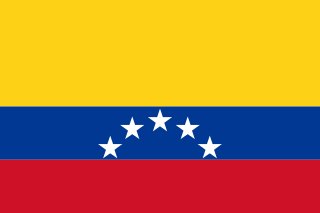
The Republic of Spanish Haiti, also called the Independent State of Spanish Haiti was the independent state that succeeded the Captaincy General of Santo Domingo after independence was declared on November 30, 1821 by José Núñez de Cáceres. The republic lasted only from December 1, 1821 to February 9, 1822 when it was invaded by the Republic of Haiti.
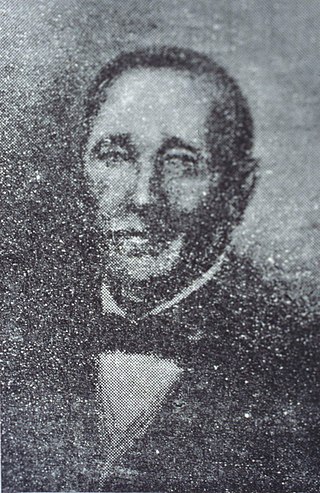
General Pedro Alejandrino Florentino was a Dominican officer in the army of the Dominican Republic. A native of Hincha, be was an active participant in border conflicts during the Dominican War of Independence. He was the hero of the important Battle of Sabana Larga. He later participated in the Dominican Restoration War, along with Gregorio Luperón, against Spain.

Azua de Compostela, also known simply as Azua, is a city, municipality (municipio) and capital of Azua Province in the southern region of Dominican Republic. Founded in 1504, Azua is one of the oldest European settlements in the Americas. The town is located 100 kilometres west of the national capital, Santo Domingo.
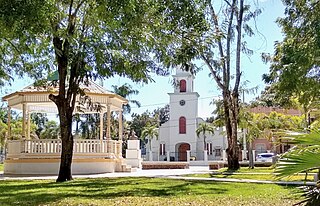
Dajabón is a municipality and capital of the Dajabón province in the Dominican Republic, which is located on the northwestern Dominican Republic frontier with Haiti. It is a market town with a population of about 26,000, north of the Cordillera Central mountain range.

The First Empire of Haiti, officially known as the Empire of Haiti, was an elective monarchy in North America. Haiti was controlled by France before declaring independence on 1 January 1804. The Governor-General of Haiti, Jean-Jacques Dessalines, created the empire on 22 September 1804. After being proclaimed emperor by the Generals of the Haitian Revolution Army, he held his coronation ceremony on 6 October and took the name Jacques I. The constitution of 20 May 1805, set out the way the empire was to be governed, with the country split into six military divisions. The general of each division corresponded directly with the emperor or the general in chief appointed by the emperor. The constitution also set out the succession to the throne, with the crown being elective and the reigning emperor having the power to appoint his successor. The constitution also banned white people, with the exception of naturalised Germans and Poles, from owning property inside the empire.

The Dominican Restoration War or the Dominican War of Restoration was a guerrilla war between 1863 and 1865 in the Dominican Republic between nationalists and Spain, the latter of which had recolonized the country 17 years after its independence. The war resulted in the restoration of Dominican sovereignty, the withdrawal of Spanish forces, the separation of the Captaincy General of Santo Domingo from Spain, and the establishment of a second republic in the Dominican Republic.
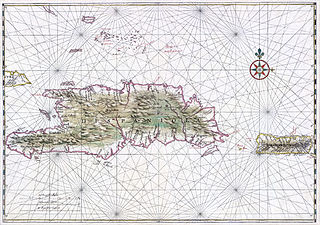
Spanish reconquest of Santo Domingo was the war for Spanish reestablishment in Santo Domingo, or better known as the Reconquista, and was fought between November 7, 1808, and July 9, 1809. In 1808, following Napoleon's invasion of Spain, the criollos of Santo Domingo revolted against French rule and their struggle culminated in 1809 with a return to the Spanish colonial rule for a period commonly termed España Boba.

The Battle of Palo Hincado was the first major battle of the Spanish reconquest of Santo Domingo of the Spanish colonial Captaincy General of Santo Domingo, that was occupied by the French in the Spanish West Indies. The site is in the present-day Dominican Republic, on the island of Hispaniola in the Caribbean.

The Dominican Army (Spanish: Ejército de República Dominicana, is one of the three branches of the Armed Forces of the Dominican Republic, together with the Navy and the Air Force.
Francisco José de Ovando y Solís Rol de La Cerda, 1st Marquis of Brindisi was a Spanish soldier who served as Governor-General of the Philippines and governor of Chile.
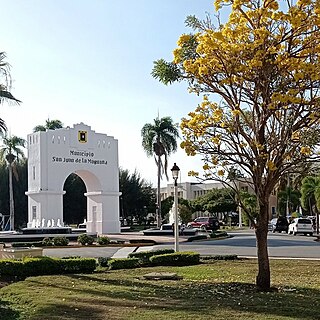
San Juan is a province of the Dominican Republic. Before 1961 it was known as Benefactor. San Juan is the Republic's largest province, bearing a size of 3,569 square kilometers, and it is landlocked.

José Desiderio Valverde Pérez was a Dominican military figure and politician. He served as the 7th president of the Dominican Republic from June 13, 1858 until August 31, 1858.

Juan Sánchez Ramírez was a Dominican general who was the primary leader of the War of Reconquista. He is known for leading the troops in the Battle of Palo Hincado. The decisive Dominican victory resulted in the end of French rule in eastern Hispaniola in 1809. He was the first Dominican to serve as governor of Santo Domingo.

Campuzano-Polanco was a prominent family from the Captaincy General of Santo Domingo with origins in Santiago de los Caballeros. During the colonial era of the Hispaniola, their members and descendants went on to occupy high political, military and ecclesiastical positions, locally and outside the Island, as well as in the metropolis of Spain. Their merits extend since the beginning and until the end of the colony.
François d'Alesso, Marquis d'Éragny was a French soldier who was briefly governor general of the French Antilles.

The Devastations of Osorio refer to a period in the colonial history of the Captaincy General of Santo Domingo, modern day Dominican Republic in the early 17th century. In order to eliminate the contraband trade in the north and the northwest parts of the island, the Spanish monarch Philip III sent an order to the then-governor of Hispaniola, Antonio de Osorio, to depopulate those parts of the island and to relocate the inhabitants to the vicinity of Santo Domingo in the southeast of the island. The Devastations were carried out between 1605 and 1606.

Our Lady of Altagracia or the Virgin of Altagracia, in Catholic Marian devotion, is a title of Mary by which she is honored as the “protective and spiritual mother of the Dominican people.” The title also is used for a particular image of Mary with the baby Jesus in a manger. Her patronal feast day is January 21, a holiday/non-working day in the Dominican Republic on which many faithful devotees of the Virgin come from all over the Dominican territory to the Basilica-Cathedral of Our lady of Altagracia, in the province of La Altagracia. Devotion to her is also prominent in areas outside of the Dominican Republic where Dominican influence flourishes, including New York City, where her feast marks the beginning of Dominican Heritage Month.




















